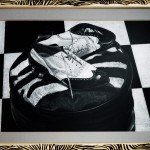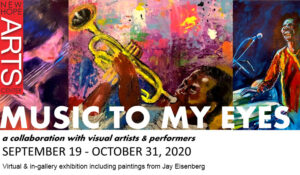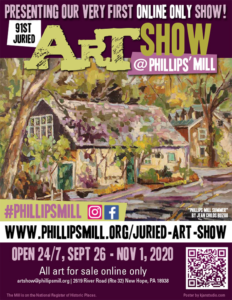 [br] [br] “Franz Kline’s Studio” White chalk and conte (Fr.) crayon on black paper, self made frame with applied faux zebra skin, 36″h x 46″w
[br] [br] “Franz Kline’s Studio” White chalk and conte (Fr.) crayon on black paper, self made frame with applied faux zebra skin, 36″h x 46″w
As a young art student in high school, on my trips into New York City, I often went to MOMA, the then adjacent Whitney, and the newly opened Guggenheim. The New York School and that of the Abstract Expressionist’s, both American and ex-patriot Europeans, had a profound influence of me.
Early forays and experimentation in that direction lead me toward finding what in fact might be the antithesis of what was at the time the trend and the current avant garde. As “Pop” filtered into the landscape of the New York galleries and the art world, I tried to find my own path. It lead me to representational work and further and further away from abstraction toward my own view of realism.
To me abstraction and reality cross swords and temperaments all the time. Realism in art is only a controlled way of presenting abstraction that gives the illusion that what we see is recognizable, concrete, referential, and exists in the real or natural world .
To view a realistic painting from an extreme close-up point of view, where one can only see the visible surface, is to see all the abstraction and how it is orchestrated to create a sense of reality. Only when you back away and see it as a whole, does all the abstraction blend together to become a reality we recognize.
This drawing is my way of paying homage to the influence of the abstract painters whose work then and now I still admire.
The theme and the technique both came into to play as I toyed with the idea that a black and white studio could be an inspiration for a black and white world, in dress, in cinema, or on canvas. Once again I chose an icon of American fashion, the classic men’s “spectator” shoe as the focal point of the image. Something also for a spectator who views my work.
I was tempted to work in this medium and basically flip the concept of usually starting on a white surface and creating positive space in black or color and most assuredly what Kline did. So I began and executed the drawing on black paper using a variety of white conte (crayon) chalks.



